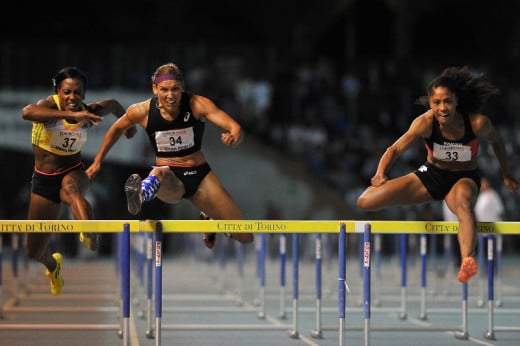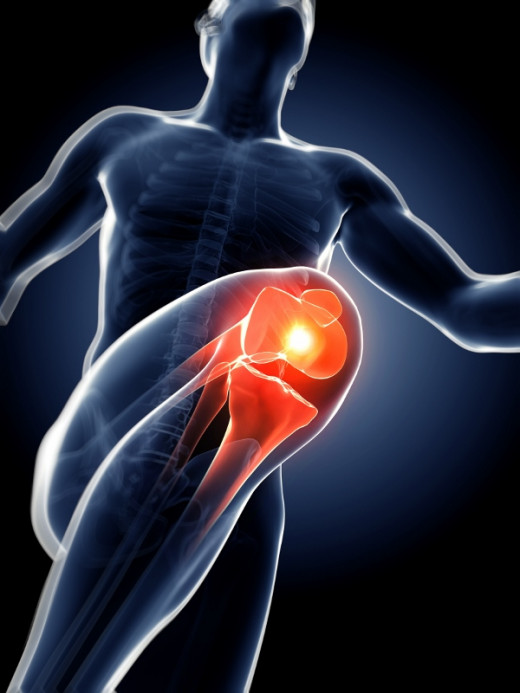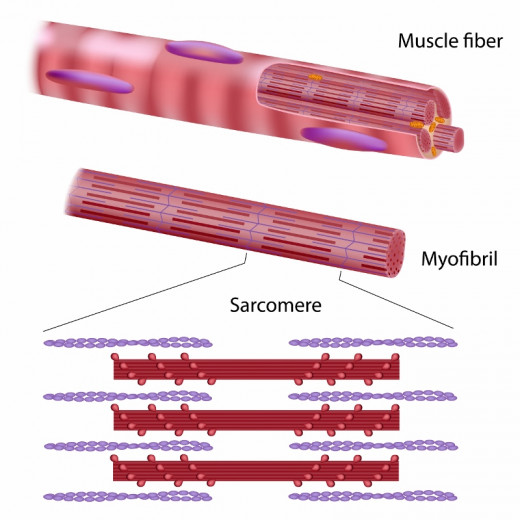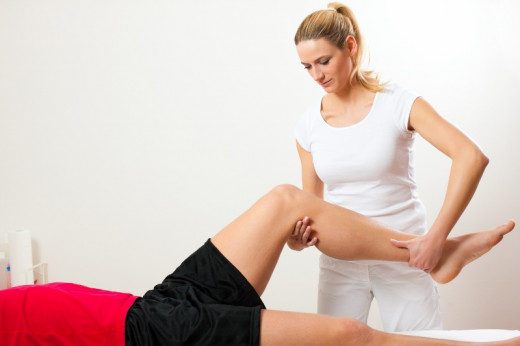A Runner’s Guide to Stretching: Should Runners Stretch?

The Big Question Mark- Should We Stretch?
Let’s start with the fundamental question: should a runner stretch regularly? Why, or why not?
Up until recently, I did not know there was any doubt as to the answer to this question. Of course runners should stretch. Stretching reduces the chances of injury, lessens post-training soreness, and does all sorts of other important things for your muscles. Right?
Then, I started doing the research—and discovered that the answer is not as straightforward or as definitive as all that.
First, it’s relevant to note that stretching is an umbrella term that covers everything from yoga to traditional static stretches to dynamic stretching. The variety of kinds of stretching alone casts a web of confusion over the question “should I be stretching?” in the mind of the recreational runner. Now, no one has a problem with dynamic stretching in the sports world as far as my research led me to understand - the controversy revolves around traditional static stretches.
Secondly, it’s important to note that when you stretch is just as important as how you stretch. Traditionally, both pre-run and post-run stretching were considered beneficial; however, pre-run static stretching gets generally bad press in recent studies, while there seems to be less of a consensus on the value of post-run static stretching. Now, on to the research!

Research Says: Stretching May Not Matter
This study, published in April of 2007 on the website of USA Track and Field, was one of the larger and more comprehensive studies on pre-run stretching I found. It included close to 1,400 runners from ages 13 to 60 and up, who were divided into two groups. One group was told not to stretch before runs, and the other was given a pre-run stretching routine containing traditional stretches (which can be found with illustrative photos here). During the three-month period the study ran, about the same percentage of stretching and non-stretching runners (approximately 16%) sustained an “injury,” which was defined as any impairment that kept participants from following their training regimen for at least three days. The researchers concluded that stretching before a run seems to have no real effect on injury rates.
Interestingly enough, there was a group which sustained a higher percentage of injuries (about 23%). This group was made up of runners who had been stretching regularly before runs prior to agreeing to be part of the study, but were assigned to the non-stretching group. Dr. Daniel Perles et. al. reflect on the implications of this finding at the end of the study, stating that “an immediate shift in a regimen may be more important than the regimen itself.”

Research Says: Stretching May Increase Risk of Injury
So, we have one neutral response to static stretching, specifically before running. Fair enough. But then I encountered a few studies which explore the relationship between flexibility and movement, and conclude that increased flexibility may prove actually detrimental rather than beneficial for runners. This study, conducted by the US Army Center for Health Promotion and Preventative Medicine in 1999, examined a wide variety of demographical, anatomical and behavioral factors and attempted to plot their relationship to the potential for injury during physical training. The researchers found that flexibility was associated with the risk of injury in military populations, and write, “US Army trainees at both the high and low extremes of back and hamstring flexibility experience more injuries,” suggesting a “need to re-examine the widely held belief that greater flexibility protects against injury.”
Another recent study at the University of Cape Town in South Africa examined the relationship between flexibility, running performance and a specific gene called the COL5A1 gene. Previous studies correlated this gene with running efficiency, and the researchers wanted to examine just how strong this correlation was. The study followed seventy participants in the 56K Two Oceans ultramarathon. Each participant was tested for the gene before race day, and underwent a flexibility sit-and-reach test (among other tests).
After the race, when the data was collected, it was determined that runners who possessed the gene finished an average of 6.5% faster than those who did not have the gene. And—dun dun dun—those who had the gene were also, on average, significantly less flexible. While this study does not provide real grounds for any practical measures such as stretching more or less (you either have the gene or you don’t and not stretching will not give you the gene), it does suggest that individuals with a tendency to develop tight muscle fibers rather than loose ones have an advantage in running.

The Big Question Mark Remains
In the end, even the most comprehensive and detailed studies came up with nothing but a big old question mark. And you’d think that over the years the research would become at least a bit more definitive, but no. A systematic review of the literature on the relationship between running and stretching conducted in 2004 by the Center for Disease Control concludes, “there is not sufficient evidence to endorse or discontinue routine stretching before or after exercise to prevent injury among competitive or recreational athletes” and that further research “is urgently needed to determine the proper role of stretching in sports.” Seven years later, another literature review conducted in 2011 by Drs. M. P. McHugh and C. H. Cosgrave comes to the same conclusion, and they too call for more research to be done in the area.
What to do with this ambivalence? The thing you’ll notice here first hand is that stretching is not a simple topic to address. The world of applied science when it comes to the human body is surprisingly tricky and difficult to be objective about.
4 Basic Principles
1. Static stretching before a run saps the energy in your muscles, and should likely be avoided.
2. Increased range of motion is likely not causally linked to muscle fiber injury.
3. Stretching incorrectly can be very bad. It is important to know how to stretch correctly.
4. Stretching can ease muscle pain, and thus can be useful as a pain relief method similar to icing or heating the muscle.

Back to the Basics: Basic Scientific Evidence
The study I ultimately found to be the most helpful on a practical level was Dr. Ian Shrier’s oft-referenced 1999 critical review. Shrier evaluates a number of clinical and scientific studies done on stretching, and concludes that the majority of credible clinical studies suggest that stretching before exercise either has no benefit or increases the risk of injury. More importantly, I thought, Shrier’s article delves into the reasons why stretching should or should not be done by distilling what he calls the "basic scientific evidence" extracted from scientific studies done on stretching. These studies focus on the kinetic and physical effects which stretching has on muscles, and how that might affect motion. Shrier summarizes the scientific findings neatly in the following points:
- “An increase in compliance decreases the amount of energy that a muscle can absorb”- in other words, stretching before activity can sap muscle energy. This finding is in agreement with studies that have found that an athlete’s box jump height decreases after static stretching.
- “Heterogeneous sarcomere lengths means that muscles can be injured during activity even though they are not stretched beyond their normal length”- basically, the question this statements answers is whether a muscle sustains injury because it reaches a certain length or because a force is applied to it. The answer is force, and lies in the fact –and it’s about to get technical here—that muscle sarcomeres (the basic units that make up muscle fibers) stretch and contract in relation to each other; at the same time that some are contracting, others are stretching in equal proportion. Injury occurs as a result of the energy absorbed by the muscle, when the energy is such that individual sarcomeres in the muscle become stretched too far, rather than the entire muscle stretching itself. So range of motion may not change during a stride that damages your hamstring, for example, because sarcomeres in the muscle are contracting and stretching proportionally. Rather, it is the force applied which causes certain muscle fibers to stretch beyond their capacity and be torn. What this means is that increased flexibility does not necessarily cause injury, but that it is a strong or ill-applied force which damages muscle fibers.
- “Even mild stretching can cause damage at the cytoskeletal level” – if you stretch incorrectly, even just a little, you can damage your muscles. For example, putting improper torque on your knee just up to 20% beyond resting fiber length can cause damage.
- “Stretching masks muscle pain”- stretching increases your range of motion not necessarily because it increases muscle compliance or flexibility, but because it decreases the level of pain you will feel by going beyond your initial range of motion. Similarly, icing and warming muscles increase range of motion even though the muscle has not been lengthened, simply because they increase the pain felt by extending a muscle beyond initial range of motion. As such, slightly increased range of motion caused by stretching is nothing to shy away from- one receives a similar range of motion from icing or warming the muscle, and no one is going to tell you that icing a muscle increases the risk of injuring it.
I feel it's important for any athlete to understand the points Shrier presents above, because it reveals much about the way our bodies work. What can be derived is that 1. Static stretching before a run saps the energy in your muscles, and should likely be avoided. 2. Increased range of motion is likely not causally linked to muscle fiber injury. 3. Stretching incorrectly can be very bad. It is important to know how to stretch correctly. 4. Stretching can ease muscle pain, and thus can be useful as a pain relief method similar to icing or heating the muscle.
In applying these principles to your running routine, it’s helpful to think of running as an applied rather than a theoretical science- you have to experiment with what works for you, and modify your approach based on the results. It should not simply be about following a set of rules, but understanding the principles behind the “rules” and applying them in a way that works.

Practical Application: Advice From the World of PT
So, I turned to a close friend of mine who is currently finishing up a Doctorate in Physical Therapy (we will call her Jeanette) to help me formulate a way to apply this information to my stretching and running routines. Since she is currently working at a clinic which focuses on sports-related rehab, she had a lot of relevant things to say and a great perspective on how to approach stretching in practice rather than purely in theory.
The first thing to realize, she says, is that all the parts of your body work together to allow to you complete a movement such as running, and that all of these parts (your muscles, joints, ligaments etc.) are constantly growing together, pushing and pulling against each other as you train. Your muscles undergo a constant process of growth and fine-tuning in relation to each other that allows them to operate most efficiently to perform a given motion.
In light of this any sudden changes, like abandoning a stretching routine or trying out a new form of running, throw a wrench in this process of fine-tuning and are certain to cause injury (the destruction of the muscle sarcomeres we discussed earlier). Any changes to your routine, form, or distance should be made gradually, a conclusion which echoes the USA Track and Field Study reviewed above. Also in light of this, flexibility or length in some muscles is necessary to allow the opposing muscles to do their job correctly. For example, if your quads are too tight, they won't stretch out enough to allow your hamstrings to fully contract and generate as much power as they might have the potential to generate. So stretching can be useful in achieving the proper balance between muscle groups.
The second thing to realize according to my (lovely and wonderful) friend Jeanette is that “injury” is unavoidable, especially when pushing your body to new limits. The researchers in the USA Track and Field study define it as any inpairment which prevents a runner from completing a regular training routine for three days or more, and I'm pretty sure every runner I know has sustained an “injury” which kept them out of training for at least three days. From overtraining to shoulder pain I myself have been out of commission for weeks or months due to various overuse injuries, and any runner who undertakes significant distance running is almost surely going to sustain similar “injuries.” Maybe we runners should not be so afraid of that term; it’s not a looming unfamiliar calamity that might get you one day, it’s something we have all been through before. Stretching doesn't cause these injuries; running does. And we’re not going to stop running because of it.
But according to Jeanette and the evidence given by Shrier, stretching may help ease the training process and can certainly help treat some overuse injuries caused by it. Many runners don’t stretch at all, and that works for them. However, everyone’s body is different; and for me stretching reduces the pain of training in a way that allows me to work harder the next day, has been helpful in treating shoulder pain issues, and is a tool I use to help me move towards becoming less quad-dominant.
In that vein, Jeanette stresses the importance of lengthening the muscles in relation to each other so they can work properly. Stretching as a runner isn't about increasing flexibility, it’s about elongating the muscles in proper proportion so that they can work together without damaging each other. And it’s one of the standard methods for treatment of many common overuse injuries for runners. Jeanette told me, “we see runners in my clinic all the time, and when you’re injured and sent to a Physical Therapist, you will be taught therapeutic stretches. You will be told to stretch.”
So if you’re one of those people for whom stretching works, you should do your research, pay attention to your body and use those stretches which are the best use of your time. Happy trails!








